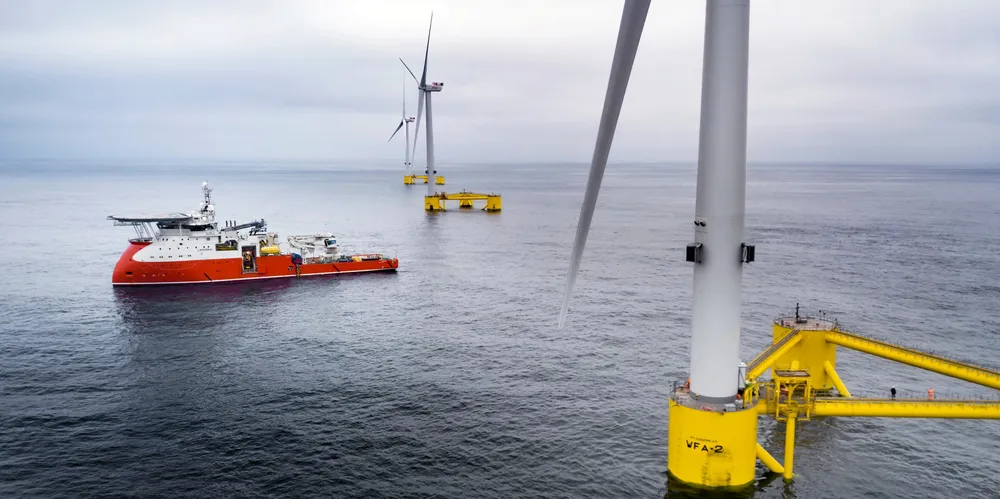Bend the 'grid matrix' | Floating wind farm layout rethink would speed power cost-cut
Developer-backed European CoreWind project work finds 'undervalued' micro-siting could trim 3-5% off array cost of energy as industry looks for commercial traction

‘Micro-siting’ of future floating wind power arrays could shave an “undervalued” amount off the technology’s currently high levellised cost of energy (LCOE), potentially giving a market-accelerating boost to the sector as it strives to industrialise, a European research project has concluded.
Breaking from the “traditional [grid] matrix” when planning layout for an offshore wind farm and instead using “staggered” or “irregular” arrays, “would lead to further [LCOE] reductions”, said José Rapha, a research engineer at the Spanish R&D institute Irec, which is leading the project.
“Wind wake is an important part of this [rethinking of layout around micro-siting] – because it reduces wind speed and increases turbulence” creating a harder-to-harness windstream for the turbines – and has longer-term impacts “from the point of view of energy yield, [and floating] substructure fatigue”, he said, speaking at a seminar run by industry advocacy body WindEurope.
“But in optimising [future projects]… we also must consider local wind speed and different speeds in different parts of a wind farm; bathymetry [as linked to water depth and strains on mooring lines and power cables]; electrical layout; minimum distance from shore and distance from port, [vis à vis] operations and maintenance costs. This all influences the LCOE [of a project].”
The CoreWind project, which has the mission to cut 15% out of floating wind’s 2014 ‘benchmark’ LCOE of €127/MWh ($144/MWh), has developed a PSO – ‘particle swarm optimisation’ – algorithm to fine-tune a new approach to floating wind development layout.
The case studies of the three reference locations revealed potential LCOE reductions through micro-siting of turbines of 3.9% at the Morro Bay site, 4.3% in Barrow Bay and 4.8% off the island of Gran Canaria.
“This may sound ‘small’”, noted Rapha, “but we are talking about a lot of money [in power production terms over a project’s lifetime].”
For the Gran Canaria location – the lowest cost scenario due to proximity to grid and construction infrastructure among other parameters – micro-siting could cut LCOE down to just over €60/MWh.
“Regarding the overall LCOE optimisation, between 3-5% is quite good in fact because it suggest just ‘moving the turbines around’. We are not talking about designing cheaper, we are designing smarter. That’s good news.”
Rapha stressed that floating wind farms’ siting “depends on a lot of factors – it is quite a complex task: wind farms could be optimised in ‘one way’ but then other costs would increase, so the final LCOE would not improve.
“With the proposed PSO… sub-optimal layout can be found in minutes [of data processing] as the most major [potential] improvements are to be found in the first iterations [of a project’s layout planning].”
The floating wind industry to this point has largely focused on reducing the material cost of the platform and mooring lines – the two biggest price-tags on a project.
<b>CoreWind's core team</b>
IREC (project coordinator)
Equinor
Cobra
Ramboll
JDR Cables
Innosea
UL
UPC
Esteyco
IH Cantabria
Danish Technical University
University of Stuttgart
Politecnico Milano
WindEurope